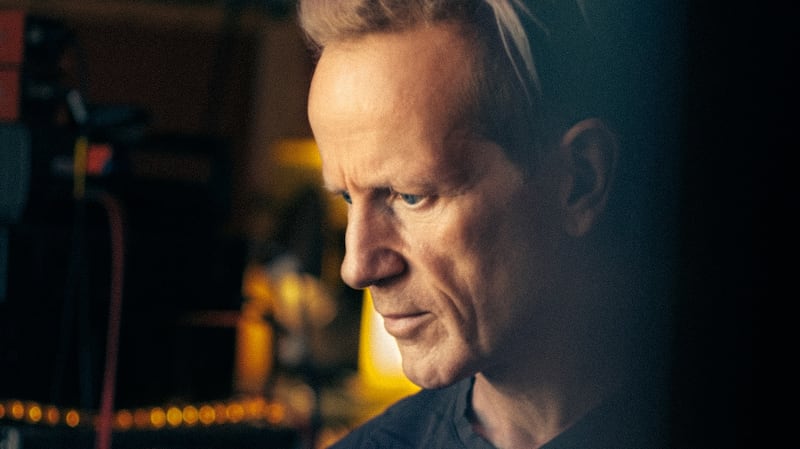He is the guy who, if not occasionally interrupted, could talk all four legs off a donkey. She can’t speak or write English and so her answers to questions are translated and then delivered via email. He is California-based Dubliner Jacknife (Garret) Lee, one of the most in-demand record producers of recent years and a soundscape technician who has assisted everyone from U2, Taylor Swift and Snow Patrol to a raft of lower-profile music acts (including his latest side project, Telefís, which sees him collaborate with former Microdisney and Fatima Mansions songwriter Cathal Coughlan). She is west African Rokia Koné, one of Mali’s most revered and dynamic singers.
"Oh, I never spoke to her," he says, casually, "and I never emailed her. Still haven't"
If the pandemic has been beneficial in any way – not only in the arts but also day-to-day life, in general – it is how most people discovered they really wanted to connect with each other, collaborate, talk or at very least to email. That’s the theory, anyway. Sitting in front of a bank of sound equipment in his Topanga Canyon home, late to the Zoom interview because he forgot to stick the appointed time in his diary, and with bursts of screeching noise coming from outside (“the builders are here!”), Lee can be justifiably proud of the tradition-enhancing sounds he has created for the joint album, Bamanan. I ask him about bridging Malian musical traditions with what he does best, and were any musical ideas talked about between him and Koné? “Oh, I never spoke to her,” he says, casually, “and I never emailed her. Still haven’t.”
This tallies with something Lee said in a recent interview: that his biggest breakthroughs in the studio happen when musicians aren’t there. “Yes, I did say that,” he laughs. It sounds like a counterintuitive work practice that raises the question: do musicians really get in the way of his efforts? Apparently, they do.
A bit of tension
He mentions the name of a very well-known musician he collaborated with in his studio, and how his work methods became ever frustrating. “I’m plugging in sequencers or playing random things when people are in the room; they’re looking at me and I feel they think I’m shit, that what I’m doing isn’t music. Sometimes I’m just trying to get a groove going, or trying out things that aren’t in key just to give it a bit of tension.”

When he does that, he adds, people in the room generally panic. “I’ve lost their trust. Most of the big breakthroughs I’ve had with pieces of music are when the artists aren’t there because I have the space to represent their music in a way they may not have imagined. The stages to get there are, generally, all accidental, but I’ve been around long enough to not worry if things sound terrible in the here and now because I know they won’t, eventually. There will be something in the terrible experiments that will open a way for the music to go. It isn’t that I’m brave, it’s just that I know it’s the process.”
As far as Koné is concerned, the process worked, although she says her first reaction on hearing the results of Lee’s “terrible experiments” was one of shock. “It was so different to what I am used to hearing,” Koné writes. “However, I understood that through collaborations like these something fresh and new can emerge. As I received more of the songs he was working on, I really grew to love what he was doing. In the future, maybe there will be a time when people will not listen to our music, at least in the way we sing it as it is now, and so it’s important to experiment, to develop it. Working with Jacknife, I have had the opportunity to explore another way of doing music and playing. It brings fresh blood to the music in general and, God willing, opens up new opportunities for my career.”
What was she expecting Jacknife to do with the music she and her musicians sent to him? There were no expectations at all, she says. "I wanted to remain open-minded and allow Jacknife the same freedom for his role that I had when I first went into the recording studio with my band to begin this album. I improvise a lot in my performances, and that helps me to get the best out of my music. I think it was good that Jacknife could be free in a creative way when he worked on the songs. The result is very pleasing. I have had a chance to share the music with my friends and family here in Mali, and they have only had good things to say about it."
Making a connection
They first connected, says Lee, not only because of his work as a judge on a remix contest sponsored by the record label Real World but also through occasional work with the sound equipment company Universal Audio. He had completed his most recent album (2020's The Jacknife Lee, which featured musicians from Ghana, Kenya and Nigeria), when out of the blue Universal Audio sent him some music that had Koné singing on it.
"It was raw, and unlike a lot of egotistical and vain vocalists, I realised she wasn't singing to impress but actually singing for herself"
“I got into the habit a few years ago of, if I liked something I heard, I would ask to collaborate, just to communicate in a different way. I asked for more of Rokia’s music, naively thinking I could do something with it, but what they sent me was about 15 minutes in length, with no time signatures and no keys. When I listened to it, I sensed I couldn’t do anything with it – I didn’t know the language and I felt I didn’t know how to edit it down to a reasonable size. I was sure I had no way into it, yet I knew I couldn’t send it back to them with just a bit of polish on it.”
What brought him further into the music, he enthuses, and what compelled him to continue, was Koné’s voice. “Usually, when someone sings that well, especially now in modern western culture, a lot of the vocals are learned from watching television – you know, voice gymnastics, showing off. As that progresses it gets more elaborate and extravagant, but Rokia’s voice was different. She could do the gymnastics, for sure, but she wasn’t in tune and her timing was all over the place. It was raw, though, and unlike a lot of egotistical and vain vocalists, I realised she wasn’t singing to impress but actually singing for herself.”
Easy inspiration
Such an approach comes naturally to Koné, who as a child learned songs from her grandmother, aunts and uncles. She writes that when she is creating music, “there are times when I just sing and lash out. I release myself into the music, I let it take me over. I’ll sometimes join my dancers and move frantically, but this all comes from the love I have for music. Inspiration for songs arrives very easily. Sometimes it comes when I sleep, if I want it to. I’ve never asked anyone for a sound or to give me a piece of music. Whether I’m on stage or in a studio, when the music begins I open my mouth and it just comes to me.”

Lee’s experimental instincts surround Koné’s distinctive and mercurial voice, making Bamanan an especially singular piece of work. He says he completely removed the background music from the tracks that had been sent to him and just listened to the voice. “Like in the movie Arrival, I tried to find patterns and sounds that linguistically related to each other. I found phrases I quite liked or that meant something to me, and then I found tempos I knew I could work with.” By working on what he terms “the DNA of the music”, Lee says he gets to know who the person behind it is.
“Listening to Rokia’s voice and then losing my reverence for it, it became unanchored from its context, which meant I could chop it up and figure out a time signature that worked. Initially, I felt I had bitten off more than I could chew, for sure, but through stubbornness and my practice, I found a way in. I feel I got to know, not through any great intellect but rather instinct, what she’s saying and what her intentions are.”
Bamanan is released through Real World Records on February 18th













